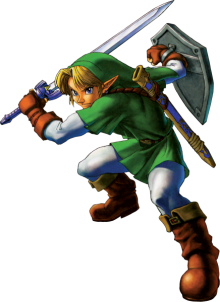Control Schemes
Posted on November 10 2012 by Hanyou
 A good control scheme is absolutely necessary to an enjoyable experience in a Zelda game. The Legend of Zelda set the tone for the games to come with a simple control scheme based on intuitive item-swapping. It was straightforward, and the number of items meant that switching was never too obnoxious.
A good control scheme is absolutely necessary to an enjoyable experience in a Zelda game. The Legend of Zelda set the tone for the games to come with a simple control scheme based on intuitive item-swapping. It was straightforward, and the number of items meant that switching was never too obnoxious.
Link’s Awakening used a similar control scheme, improving the interface and item-swapping but adding a multitude of items that sometimes made it more difficult to pin down what you really wanted. This was probably due to its direct predecessor, A Link to the Past, which increased the number of items but mostly had the controls to back it up. With the sword and Pegasus Boots assigned to permanent slots, the Super Nintendo controller allowed for more options and wiser implementation.
But it’s the Nintendo 64 interface, first seen in Ocarina of Time, that’s the biggest achievement the series had yet managed control-wise. 3D shouldn’t have been as intuitive as Nintendo made it with Super Mario 64, but even that game had difficult camera controls that sometimes made platforming harder than it had been in a two-dimensional game.
The Nintendo 64 controller was perfectly suited for an action-adventure like Ocarina of Time. The C-buttons made item use simple, with the A and B buttons given prime placement as an all-purpose action button and a permanent assignment for the sword, respectively. As with Link’s Awakening, you triggered the shield manually (probably necessary for the mirror shield), but the R-button kept it both out-of-the-way and easily accessible.
Most ingenious of all, of course, was Z-targeting. It ensured that you could freely navigate the world even during battles if you wanted to, but it allowed you to focus your attacks on a single enemy or area. The control scheme looked complicated on paper, but things like Z-targeting actually simplified everything.
Most control schemes since have been evolutions of what was introduced in Ocarina of Time. The Wind Waker was mostly the same in principle, with the addition of camera control on the C-stick so there was a more cinematic option for seeing the action. Naturally, functions had to be moved to different buttons given the Gamecube controller’s makeup, but it was mostly the same. Twilight Princess on the Gamecube followed suit, and even on the Wii it was remarkably similar, with waggle substituting for a sword button. There was nothing wrong with this, and it actually allowed for more items to be instantly assignable and usable.
Handheld games also saw changes. While the Oracle games built on Link’s Awakening’s controls and The Minish Cap built on what was introduced in A Link to the Past, both Phantom Hourglass and Spirit Tracks used the touch screen almost exclusively. This was controversial, but the fact is that the games were designed around it, and they controlled just fine. Regardless, Ocarina of Time 3D naturally returned to more conventional controls, increasing options for item use and streamlining the interface with the touch screen. This is probably the control scheme most would have preferred in the first place, and it’s easy to see why; it maximizes the features of the handheld while preserving much of what was good about conventional control schemes.
Skyward Sword, like Phantom Hourglass and Spirit Tracks, simplifies things. There are no longer multiple items assigned to multiple buttons, and motion control is emphasized above all else. As with other control schemes, Nintendo understands their controllers and Skyward Sword maximizes its functions.
My favorite control scheme has to be the Nintendo 64 one, because it balances simplicity with accessibility. Each function is ideally placed. There was a danger of things getting overly complicated, but ingenious design ensured they didn’t. And while the 3DS certainly allows for more options, I appreciate the more economical approach used in the Nintendo 64 game.
What’s your favorite control scheme? Where do you think the series will go in the future? Do you think the controls are consistently good, or are there low points for you?



